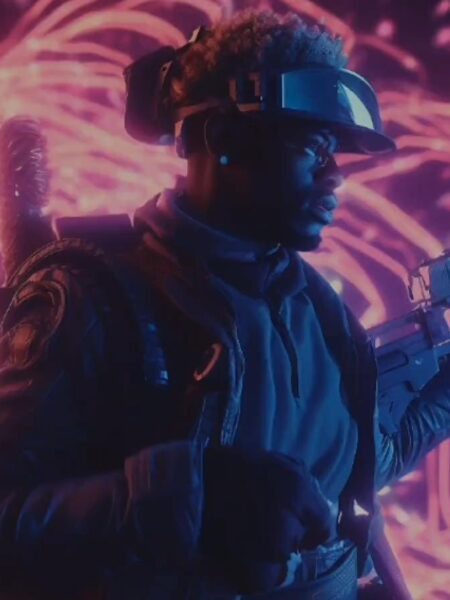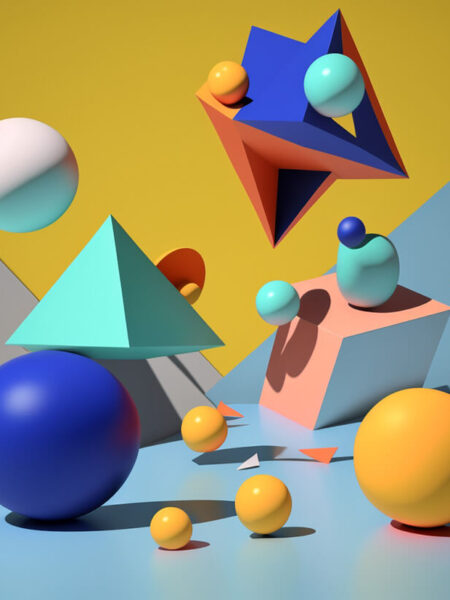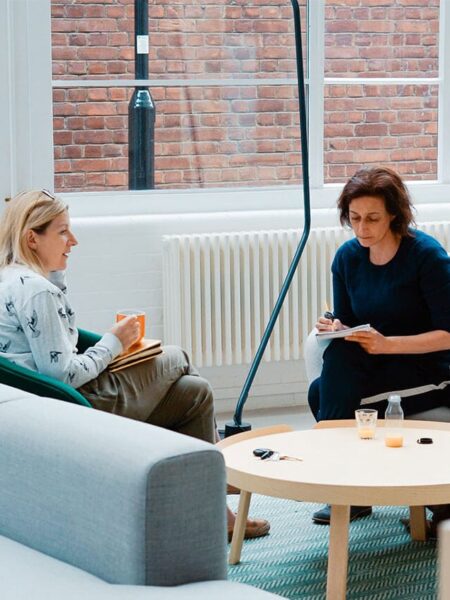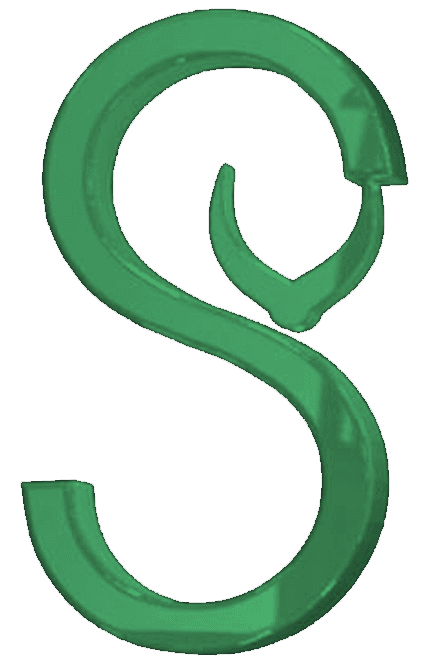Introduction
Gaussian Splatting is emerging as a transformative technique in the world of 3D capture and spatial storytelling. This innovative method combines speed, photorealism, and ease of processing, offering significant advantages over traditional photogrammetry and neural radiance fields (NeRFs). In this guide, we’ll answer the question, “What is Gaussian Splatting?” by exploring its core concepts, technical workings, pros and cons, available tools, and real-world applications. Whether you’re a journalist, designer, or content creator, understanding Gaussian Splatting can open new avenues for creating immersive 3D experiences quickly and efficiently.
Background & Core Concepts
Historical Evolution
Splatting techniques have long been a part of computer graphics, evolving from simple point-based representations to more advanced methods that leverage mathematical functions for 3D reconstruction. The emergence of Gaussian functions has enabled the creation of 2D discs—each with unique attributes such as orientation, color, transparency, and size—that collectively form a highly photorealistic 3D scene. This evolution marks a significant leap in rendering techniques, bridging the gap between raw data capture and detailed visual storytelling.
Technical Definition
At its core, Gaussian Splatting is a method of reconstructing 3D scenes where each “splat” is generated by a Gaussian function. These functions act as 2D discs positioned in 3D space. Each disc is defined by a set of attributes:
- Orientation: How the disc is angled in space.
- Color: The color information that contributes to the overall scene.
- Transparency: Varying levels of opacity that add depth.
- Size: Determines the scale of each splat within the point cloud.
When viewed together, these splats accurately represent fine details such as reflections, transparency, and complex lighting effects that are often challenging for traditional volumetric methods.
Comparative Overview: Gaussian Splatting vs. Photogrammetry vs. NeRFs
- Photogrammetry creates 3D models by stitching together multiple photographs. While it can achieve high detail, the process is often slow and less adaptable to dynamic lighting.
- Neural Radiance Fields (NeRFs) rely on deep learning to render scenes from a sparse set of images, offering impressive results but demanding significant processing power and time.
- Gaussian Splatting, on the other hand, offers the best of both worlds: rapid, real-time rasterization paired with photorealistic quality. Its unique point-cloud reconstruction method results in models that are both accurate and visually appealing.
How Gaussian Splatting Works
Mechanics of the Process
Gaussian Splatting transforms raw data from cameras or LiDAR into a detailed point cloud. Here’s a step-by-step look at the process:
- Data Acquisition: The process starts with capturing images or video footage using standard cameras or smartphones.
- Point Cloud Generation: From this data, a point cloud is generated. Each point in this cloud is associated with a Gaussian function.
- Attribute Assignment: Each Gaussian function is assigned properties like color, transparency, orientation, and size.
- Splat Aggregation: When these functions are rendered together, they form splats that reconstruct the 3D scene with impressive fidelity, capturing details such as reflections and subtle lighting variations.
Data Capture for Splats
Capturing the data required for Gaussian Splatting is similar to traditional methods used in photogrammetry and NeRFs. It typically involves using a camera or smartphone to capture a series of photos or video frames. Key considerations during capture include:
- Coverage: Ensuring you have enough views from multiple angles to fully reconstruct the subject.
- Overlap: Each frame should have at least one-third overlap with adjacent frames to aid in accurate alignment and reconstruction.
Capture Techniques: The “Three Donuts” Method
A proven strategy for capturing high-quality data is the “Three Donuts” capture pattern:
- High-Angle Orbit: Hold the camera over your head, angled down, to capture a top-down perspective.
- Medium-Height Orbit: Position the camera parallel to the ground (for people, around chest height) to capture a mid-level view.
- Low-Angle Orbit: Capture from ground level, with the camera angled upward, ensuring the base and lower portions of the subject are well-represented.
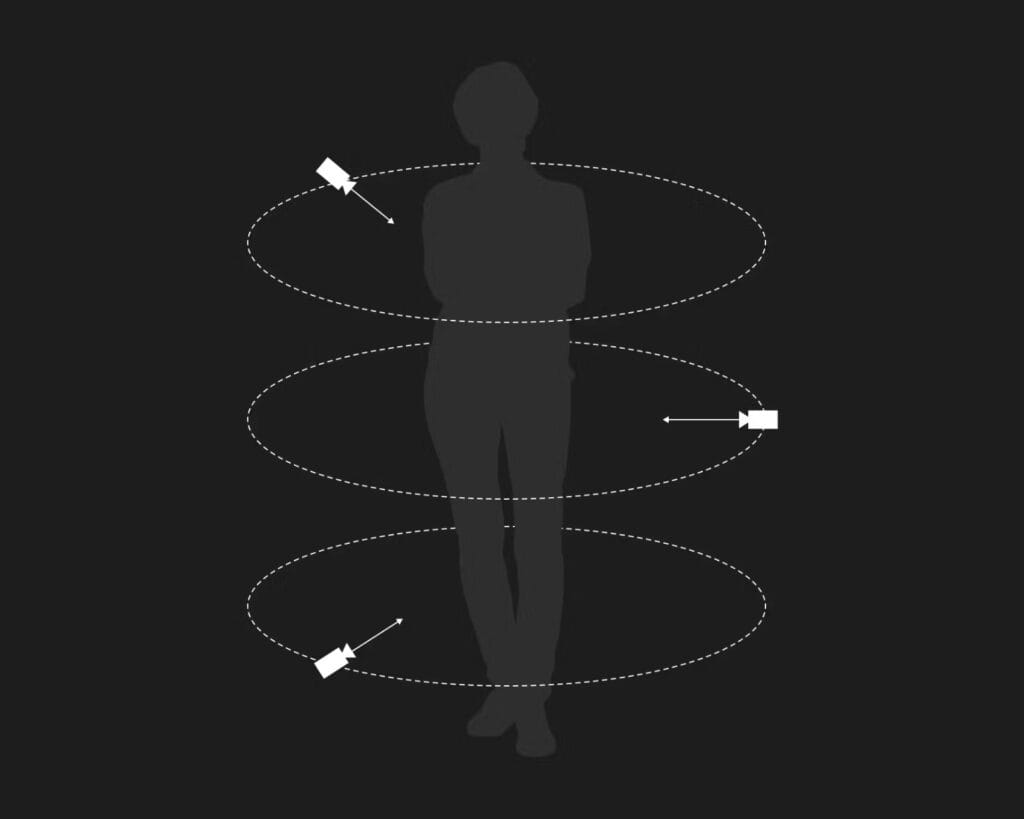
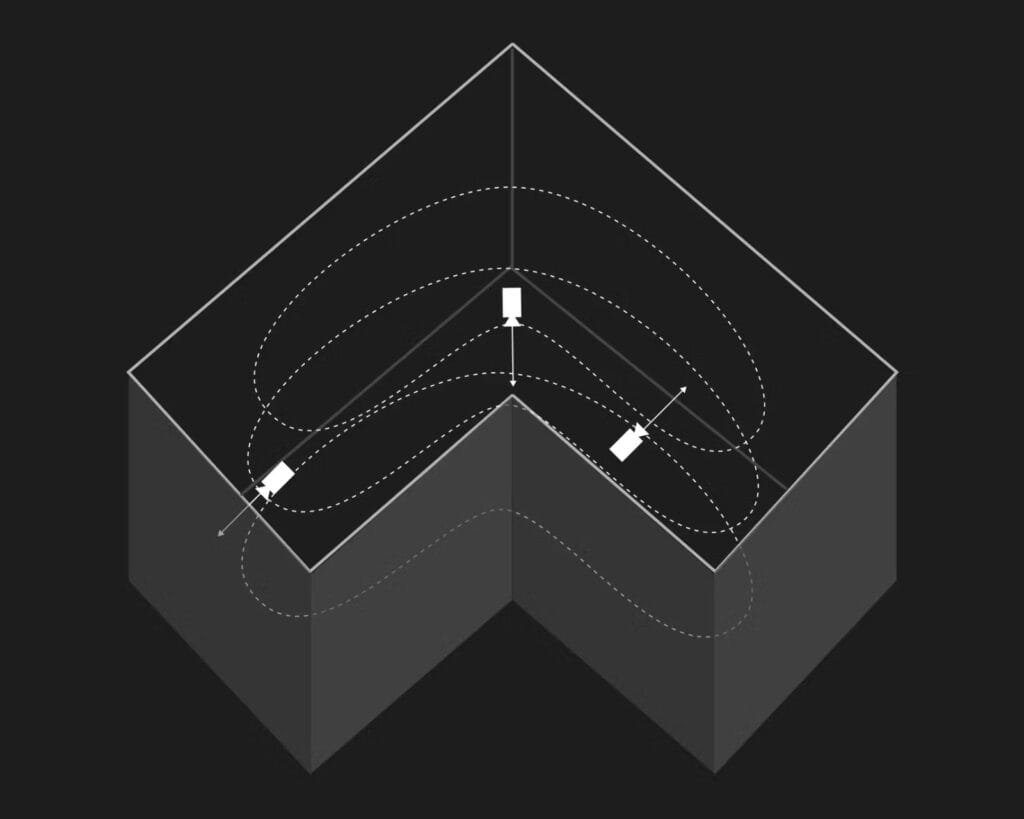
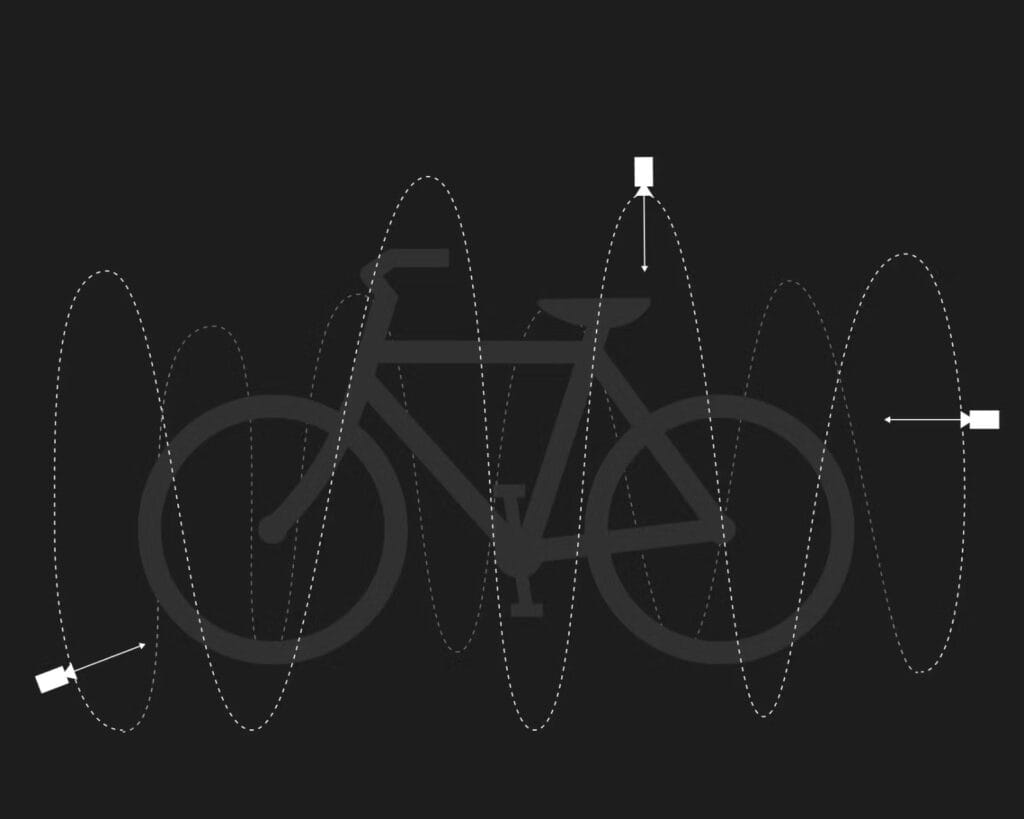
Additionally, capturing a 360° panorama or “skybox” from the same position can provide a complete environmental context, making the final model even more immersive.
Pros and Cons of Gaussian Splatting
Pros
- High-Quality, Photorealistic Scene Reconstruction: Gaussian Splatting can render incredibly detailed and realistic 3D scenes.
- Fast, Real-Time Rasterization: The process is optimized for rapid rendering, making it ideal for applications that require immediate visual feedback.
- Relatively Quick Training Process: Compared to other methods, training models with Gaussian splats is efficient.
Cons
- High VRAM Requirements: Viewing a model may require around 4GB of VRAM, with training models often needing up to 12GB.
- Large Disk Sizes: A single scene can occupy 1GB or more of storage.
- Limited Compatibility with Existing Rendering Pipelines: Integration with conventional tools and pipelines is still a challenge.
Why Gaussian Splatting Matters
Advantage Over Competing Methods
Gaussian Splatting is uniquely positioned to bridge the gap between the high detail of photogrammetry and the efficiency of NeRFs. By combining these strengths, it provides a solution that is both fast and capable of producing high-quality, immersive models.
Impact on 3D Recreation & Spatial Storytelling
For journalists, designers, and content creators, the ability to quickly generate detailed 3D models means faster turnaround times and richer storytelling. The photorealistic quality of Gaussian splats ensures that scenes are not only accurate but also visually compelling.
Emerging Questions and Future Potential
While Gaussian Splatting already offers impressive results, several questions remain:
- Can Splats be Animated?
Emerging research, such as the paper on Dynamic 3D Gaussians: Tracking by Persistent Dynamic View Synthesis, suggests that animated splats may soon be possible. - Handling Reflections and Modeling Without Reference Images:
Future advancements might further enhance the technique’s ability to simulate complex reflections and even reduce reliance on reference images. - Implications for Embodied AI:
With its dense representation of 3D space, Gaussian Splatting could play a crucial role in advancing Embodied AI research, potentially transforming how AI systems perceive and interact with their environments.
Tools, Apps, and Software for Gaussian Splatting
Mobile & On-the-Go Capture
- Scaniverse:
A mobile app that enables quick, local capture using LiDAR, Scaniverse allows for rapid preliminary assessments of a scene. This is particularly useful for determining whether a detailed capture is worthwhile before moving on to more involved processes.
Cloud & Web Processing Platforms
- Lumalabs AI:
This platform offers both mobile and web-based processing for Gaussian splats and NeRFs. It includes features like skybox generation, enhancing the immersive quality of the final model. - Polycam:
While primarily known for photogrammetry, Polycam also supports Gaussian splatting. It provides guided capture and cloud processing, which is helpful for users new to 3D data collection.
Desktop Solutions
- PostShot:
A Windows-only application that allows for local training of Gaussian splats, PostShot offers advanced control over processing parameters. This tool is ideal for those who require precision and customization in their 3D models.
Post-Processing Enhancements
- SuperSplat:
Addressing the limitations of standard desktop 3D suites, SuperSplat is essential for editing, combining, cleaning up, and compressing PLY files. This tool ensures that your splat files are optimized for both visual quality and file size, facilitating smoother integration into final projects.
Real-World Applications and Integration
Case Studies and Examples
Gaussian Splatting is already making waves across various industries. High-quality, photorealistic scenes generated through this technique are being used in:
- VR Experiences: Enhancing virtual reality with detailed, immersive environments.
- Architectural Visualization: Providing clients with realistic previews of architectural designs.
- Immersive Storytelling: Empowering journalists and multimedia creators to tell stories in 3D, adding a new dimension to digital narratives.
Integration with Industry Tools
As the technology matures, integration with industry-standard rendering engines like Vray and Unreal Engine 5 (UE5) is becoming increasingly feasible. These integrations promise to further elevate the realism and interactivity of Gaussian splats, bridging the gap between raw data capture and polished, production-ready content.
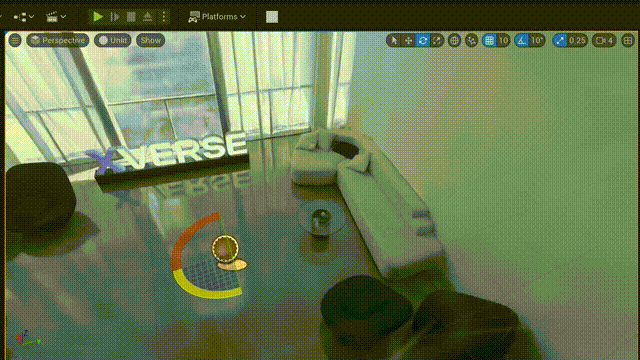
Future Trends and Research Directions
The future of Gaussian Splatting is bright:
- Dynamic Splatting: Research is exploring ways to animate splats, which could revolutionize how we think about 3D models.
- Enhanced Realism: Ongoing advancements aim to further refine the handling of reflections, transparency, and lighting.
- AI Integration: With its dense representation of 3D space, Gaussian Splatting may soon play a pivotal role in advancing Embodied AI, leading to smarter and more interactive environments.
Conclusion
In summary, Gaussian Splatting represents a groundbreaking advancement in 3D capture and spatial storytelling. It combines the best elements of photogrammetry and NeRFs, offering high-quality, photorealistic scene reconstruction in real time. While there are challenges such as high VRAM usage and large file sizes, the advantages—speed, quality, and potential for future enhancements—make Gaussian Splatting a compelling choice for modern 3D modeling.
As the technology continues to evolve, its applications in VR, architectural visualization, and even AI research are expected to expand significantly. We invite you to explore further resources, experiment with the tools mentioned, and stay updated on the latest advancements in this exciting field.
FAQS
What is Gaussian Splatting?
Gaussian Splatting is a 3D reconstruction technique that uses Gaussian functions to create photorealistic point-cloud models, offering fast, real-time rendering and high-quality detail.
How does Gaussian Splatting differ from photogrammetry?
Unlike photogrammetry, which relies on stitching multiple photographs together, Gaussian Splatting uses a point cloud defined by Gaussian functions to generate detailed 3D scenes quickly.
What are the pros and cons of Gaussian Splatting?
Pros include high-quality, photorealistic scene reconstruction and fast processing. Cons involve high VRAM requirements, large file sizes, and current compatibility limitations with traditional rendering pipelines.
Can Gaussian splats be animated?
Current implementations produce static outputs, but emerging research suggests that animated Gaussian splats may soon be possible.
What tools are available for working with Gaussian splats?
Several tools support Gaussian Splatting workflows, including Scaniverse for mobile capture, Lumalabs AI for cloud processing, PostShot for desktop training, and SuperSplat for post-processing.
Elevate Your Projects with Sophist Studio
At Sophist Studio, we blend cutting-edge technology with creative expertise to elevate your projects. Our services span game development, animation, and expert outstaffing, with specialized support in advanced 3D capture techniques like Gaussian Splatting.
Ready to transform your vision? Contact us today for a consultation.
